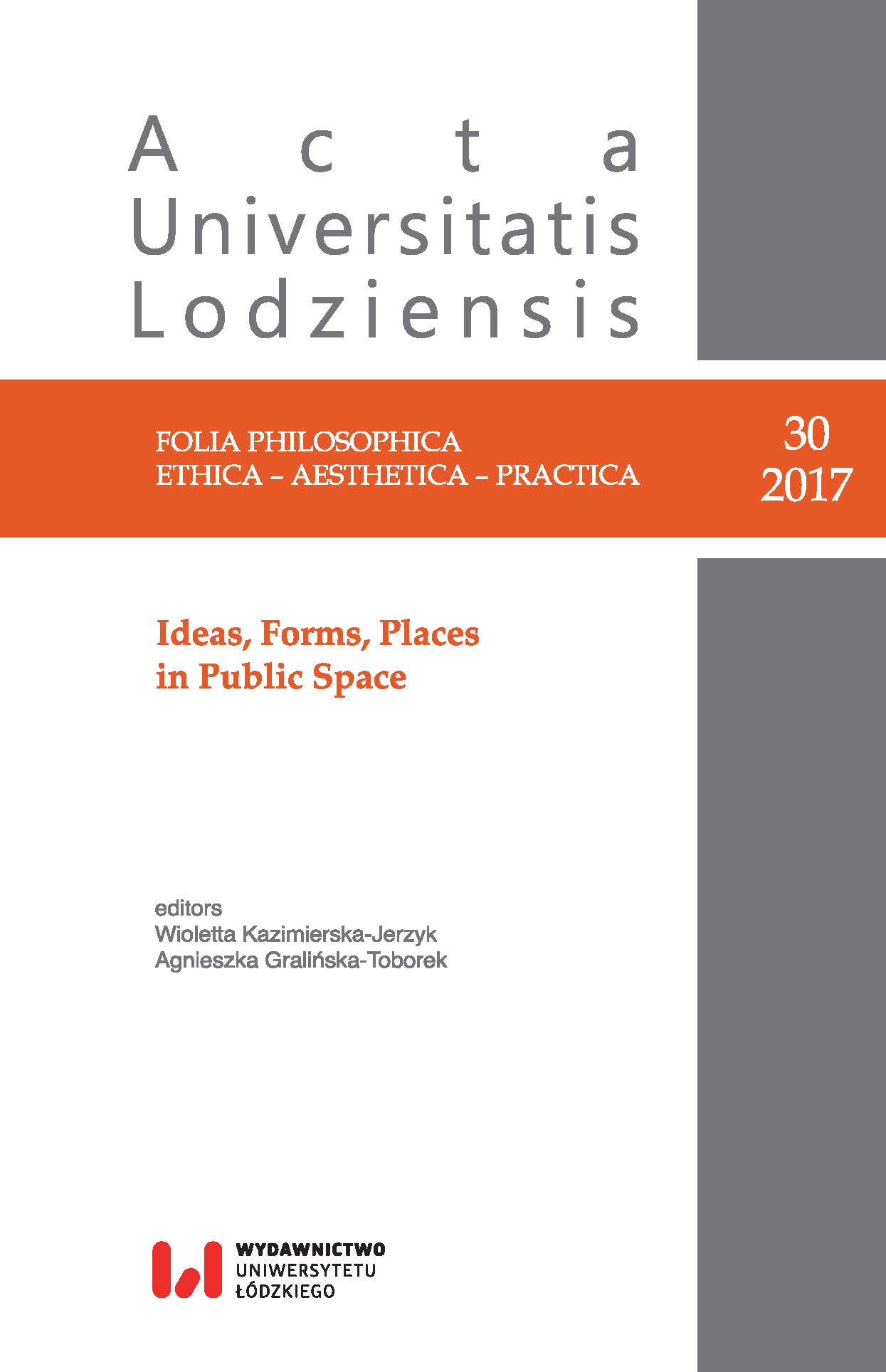Dual Place of Street Art – the City vs the Internet
DOI:
https://doi.org/10.18778/0208-6107.30.07Keywords:
Street art., graffiti, urban art., art in public space, art in InternetAbstract
Street art (or more broadly urban art), as the name suggests, has its own specific place, which is the street. However one would be mistaken to think that this type of art can only be seen there. Most street art lovers know the works of their favourite artists primarily through the Internet, not only because this kind of art is ephemeral or not easily accessible (for example, due to its dangerous or exotic locations), but because it is perhaps the best documented art that has been created in the world. For artists and lovers of street art, the Internet has become a common space to share photos. More often than not, the Internet also becomes the only place where artistic ideas exist. Paradoxically, such art, which was supposed to be the nearest to the viewer in the physical sense, has become the nearest in the virtual sense. One can, however, hope that neither consumers of art. nor artists will have to give up their direct experience of art that builds our polysensory sensitivity.
References
Belting Hans, An Anthropology of Images: Picture, Medium, Body. Princeton, Oxford: Princeton University Press, 2011.
Google Scholar
Bofkin, Lee. Concrete Canvas. How Street Art Is Changing the Way Our Cities Look. London: Cassel Illustrated, 2014.
Google Scholar
Chmielewska, Ella. “Writing on the ruins, or graffiti as a design gesture.” In The Wall and The City il muro e la città, le mur et la ville, edited by Andrea Mubi Brighenti, 31–45. Trento: Professional Dreamer, 2006.
Google Scholar
Dymna, Elżbieta and Marcin Rutkiewicz, Polski Street Art, Warszawa: Carta Blanca, 2010.
Google Scholar
Dymna, Elżbieta and Marcin Rutkiewicz, Polski Street Art. Part 2. Między anarchią a galerią, Warszawa: Carta Blanca, 2012.
Google Scholar
Eco, Umberto. The Infinity of Lists: from Homer to Joyce. London: MacLehose, 2009.
Google Scholar
Eng, Karen. “The Beauty Of Calligraphy, the Power of Street Art: We Watch eL Seed Create ‘Calligraffiti’.” TEDblog, August 21, 2015, http://blog.ted.com/el-seed-uses-calligraffiti-to-transcend-language/ accessed 22.09.2017.
Google Scholar
Glaser, Katja. “The ‘Place to Be’ for Street Art Nowadays is no Longer the Street, it’s the Internet.” Street Art & Urban Creativity Scientific Journal 1, no. 2 (2015): 6–13.
Google Scholar
McCormick, Carlo and Marc Schiller and Sara Schiller and Ethel Seno. Trespass. A History of Uncommissioned Urban Art. Köln: Taschen, 2010.
Google Scholar
Mitchell, William John Thomas. What Do Pictures Want?: The Lives and Loves of Images, Chicago. London: The University of Chicago Press, 2005.
Google Scholar
Mitchell, William John Thomas. “There Are no Visual media,” Journal of Visual Culture 4 (2) (2005): 257–266. http://journals.sagepub.com/doi/pdf/10.1177/1470412905054673
Google Scholar
Pellicari, Giada. “Graffiti and New Media. The Correlations Between the Two Culture.” In Lisbon Street Art &Urban Creativity. 2014 International Conference, edited by Pedro Soares Neves, 198–204. Lisbon: Urbancreativity.org, 2014.
Google Scholar
Shove, Gary. Untitled II. The Beautiful Renaissance: Street Art and Graffiti. Darlington: Pro-Actif Communications, 2009.
Google Scholar
Tuszyńska, Kamila. Narracja w opowieści graficznej. Warszawa: PWN, 2015.
Google Scholar
Zahar, Hela. “Street Art: Visual scenes and the digital circulation of images.” Street Art & Urban Creativity Scientific Journal 2, no. 2 (2016): 42–44.
Google Scholar
Downloads
Published
How to Cite
Issue
Section
License

This work is licensed under a Creative Commons Attribution-NonCommercial-NoDerivatives 4.0 International License.












